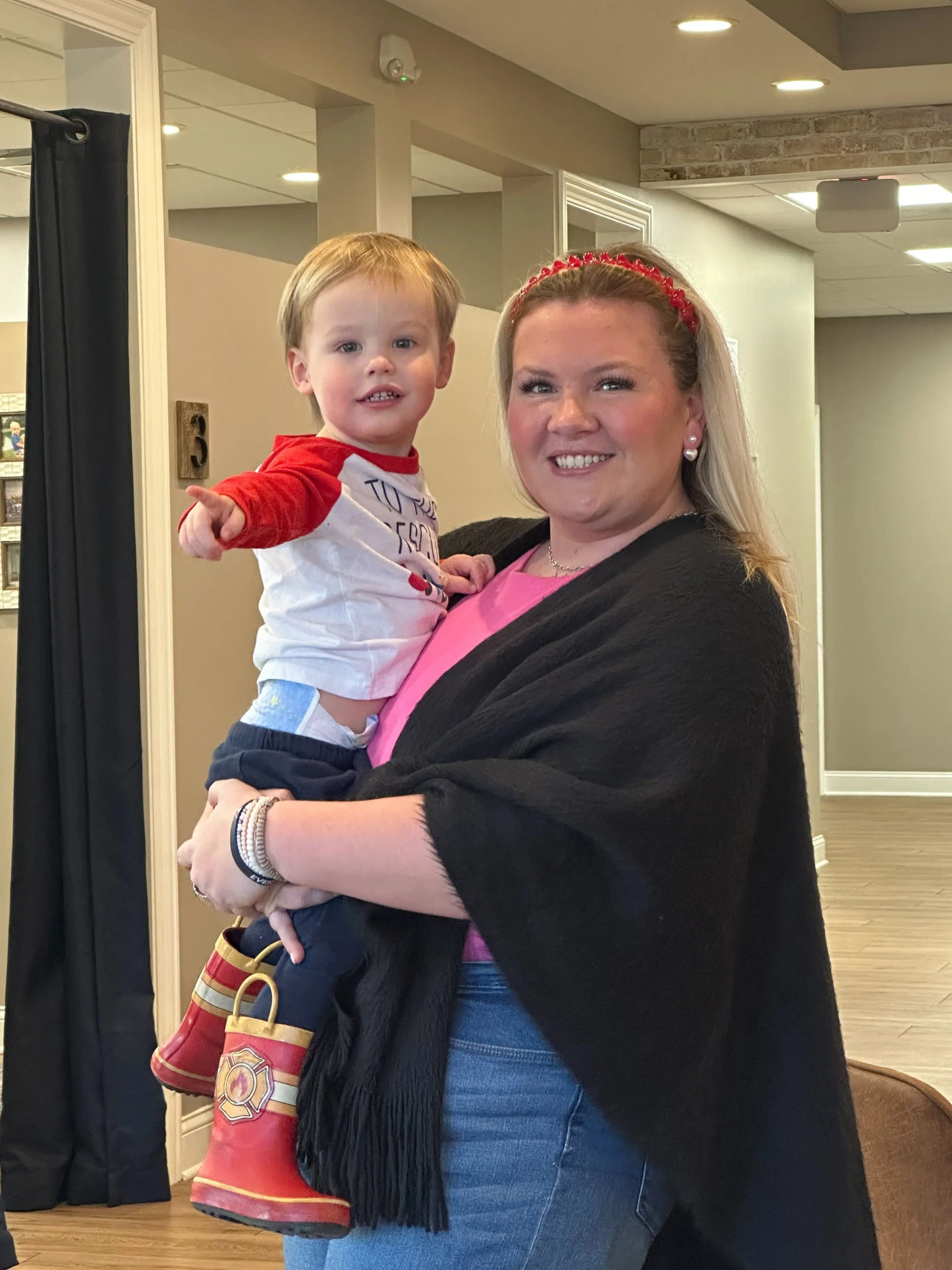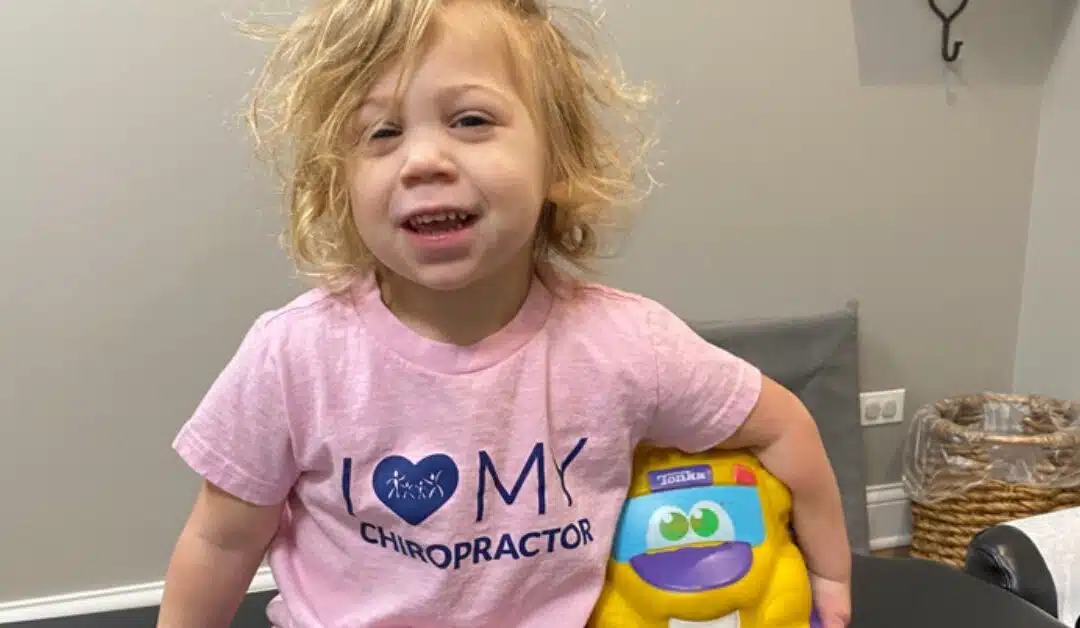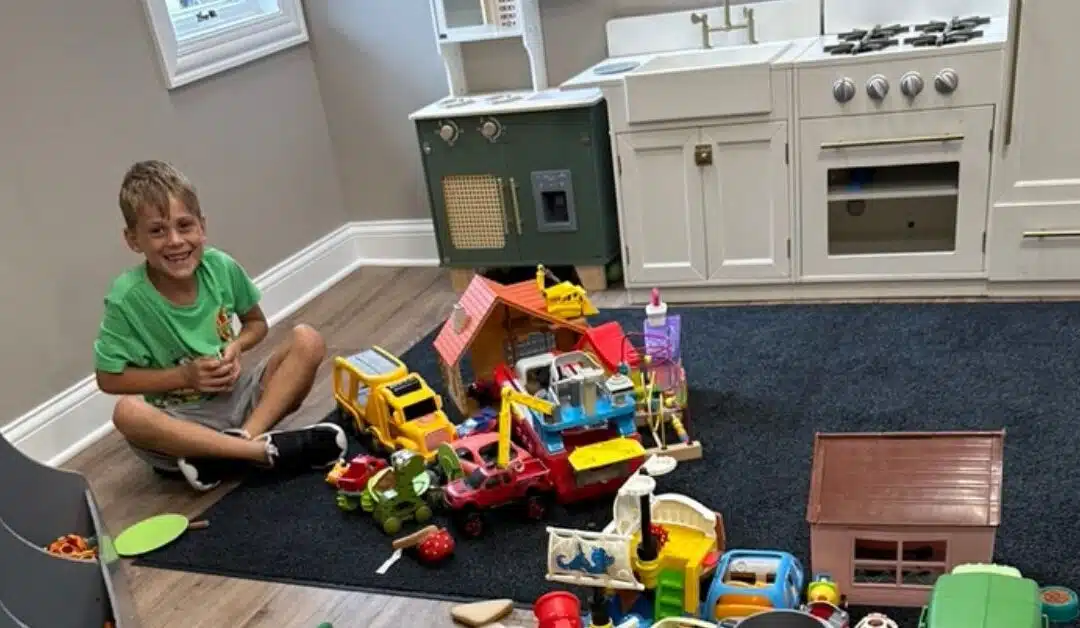As the parent of a bright-eyed infant, you wonder what the future holds for your child. You imagine their first steps, first words, first friends. But then you notice differences—an increasing lack of eye contact, no response to their name, and subtle but unusual behaviors. Other parents reassure you that “all kids develop differently,” but your instincts say something more may be going on.
Furthermore, every time you ask your pediatrician if you should be concerned about these early warning signs, they dismiss them and say, “don’t worry, they’ll grow out of it” or “it’s totally normal.”
You’re not alone in these concerns. Autism rates climbed in the past decade by 119%, now impacting a staggering 1 in 36 children. Researchers conservatively estimate that 80% of children later diagnosed show some subtle but detectable signs by 12 months of age. Yet the average age of diagnosis is still 4 years old.
This gap means countless worried families lack the support, intervention, and understanding desperately needed during the most prime early developmental period from 0 to 3 years old. The earlier Autism Spectrum challenges are caught, the more positive headway children make long-term with communication, sensory regulation, motor planning, and quality of life overall. But exactly what should observant parents watch for?
In this detailed guide, we’ll first break down what’s really causing Autism, including the outdated views of Autism being purely genetic versus the latest understanding, which shows that Autism and developmental disorders in children are rooted in a dysfunctional and off track nervous system. By taking a deeper look into optimal neurological development, parents can start to see more clearly where things can get off track early and often.
We’ll help you learn the specific red flags suggesting risk in babies and the signs of Autism in toddlers. Finally, discover the drug-free options now available to help address these root cause dysfunctions early on, like advanced assessments and Neurologically-Focused Pediatric Chiropractic Care. Catching Autism early means far more hope for each child to reach their full potential.
What is Autism?
Autism Spectrum Disorder (ASD) encompasses a range of neurodevelopmental differences affecting how children communicate, behave socially, and sense and perceive the world around them. It impacts 1 in 36 kids yet continues to confuse both traditional medical providers and parents alike.
The outdated conventional view labeled Autism a hardwired genetic condition only treatable through behavior-based therapies and psychiatric medications aimed at suppressing symptoms. But this narrow perspective leaves families lacking answers and means kids confront an uphill recovery battle.
Emerging research and clinical experience instead reveal Autism as a multi-systems disorder first rooted in nervous system dysfunction. The root cause of Autism is multifactorial and is not simply defective genes but the accumulation of stressors that disrupt nervous system development beginning in pregnancy and early childhood.
At PX Docs, we refer to this as the “Perfect Storm,” where the early onslaught of stress, tension, and toxicity overwhelms a child’s developing nervous system, shifting it into a state of sympathetic fight or flight overdrive that eventually becomes locked in and stuck on. The original description of Autism back in the 1950s was described as “Locked In Syndrome,” which, from a neurological standpoint, is actually quite accurate.
Thankfully, by addressing root causes rather than simply chasing symptoms, this PX Docs approach fits perfectly within the approach parents today are seeking. Restoring neurological function and regulation helps children improve communication, behavior regulation, immunity, motor control, and quality of life significantly without labels or limits dictating their future.
When Is Autism Diagnosed?
Autism Spectrum Disorder can be reliably diagnosed as early as 18 months of age using gold-standard diagnostic tools like the Autism Diagnostic Observation Schedule (ADOS) and the Autism Diagnostic Interview-Revised (ADI-R). In research settings, diagnosing Autism has occurred even earlier thanks to updated screening techniques that are better able to identify risk in 12-15 month-old infants based on social communication markers, including lack of eye contact, response to name, and pointing gestures.
However, the average age of diagnosis in the community has stubbornly remained close to 4 years old. This delay means countless families struggle without explanations, support, or early intervention during the prime neuroplastic period from 0 to 3 years old, when even slight alterations in the development and neurological function can have long-term consequences.
It’s important to diagnose Autism Spectrum Disorder as soon as possible when clear symptoms are present. Delaying diagnosis denies children and families access to early intensive care, such as Neurologically Focused Chiropractic, which has been proven to improve outcomes in the long run.
What Are the Earliest Signs of Autism?
Autism rarely appears overnight, but there are early signs of Autism. More commonly, subtle but observable communication, behavior, sensory-motor, and social shifts emerge gradually over time, progressively disrupting function. These are all signs of nervous system dysregulation and sensory processing difficulties.
Digging even deeper, infants who are struggling with things such as difficulty latching, reflux, torticollis, plagiocephaly, constipation, chronic ear infections, and colic are displaying classic signs of an overstressed and dysfunctional nervous system. Once again, we refer to all of this as “The Perfect Storm,” and really, it goes as far back as a stressful pregnancy, birth interventions, and trauma, and these early childhood struggles that are often dismissed but can absolutely lead to developmental challenges later in life.
While no two children develop identically, research indicates certain pervasive anomalies should create concern for atypical development or Autism spectrum risk, especially if persisting or worsening week-to-week without explanation.
By 12 months, signs like not turning when the name is called despite normal hearing, lack of pointing or use of other gestures, absent or minimal facial expressions, poor eye contact, and not showing typical enjoyment in social interaction should raise red flags, especially in combination.
By 18 months, language delays compared to peers, including lack of 1-2 word phrases and absence of word attempts outside babbling, become more prominent. Repetitive bodily movements or sensory play habits may also increase. Extreme distress arises over tiny environmental changes, and it can be hard to calm and soothe your little one.
By 24 months, restrictive interests take hold while pretend play lacks. Speech remains limited as language comprehension far outpaces expression. Fussy eating habits take hold along with intolerance of textures or temperatures — other developmental skills, including self-care, fine motor dexterity, and comprehension skills, frequently plateau.
In addition, a child’s digestive and immune system challenges continue as they struggle more and more with chronic illness, respiratory infections, constipation, or digestive problems, and therefore may end up with multiple rounds of antibiotics in the first two years of life as well. The overuse or misuse of antibiotics and other medications is also an early warning sign of Autism Spectrum Disorder and other chronic health challenges later in life as well.
There is no single definitive early sign of Autism—it’s subtle but pervasive developmental differences plus nervous system overload that don’t resolve independently that should sound the alarm and lead to further assessment and specific care protocols that address the root cause.
When Do Early Autism Signs Typically Emerge?
For decades, experts believed distinct symptoms appeared only after ages 1 or 2, with parents suddenly noticing extreme changes. We now know subtle but detectable markers manifest far earlier in the vast majority of cases. In fact, even in the case of regressive Autism, when a child does appear to suddenly backtrack developmentally when we dive further into the Perfect Storm case history elements, we can see signs of trouble early in that child’s developmental journey as well.
One very specific element we look more closely at than any other provider, even in infants and children as young as 6-12 months old, is their motor tone and development. Quite often, you can spot the signs of developmental delays, missed gross motor milestones, and low muscle tone very early, as well as identify the likely trigger of these challenges, such as breech positioning and birth intervention or trauma. When the structural and motor issues are apparent enough to warrant a torticollis or plagiocephaly diagnosis, the concern should be even more obvious.
More outward signs become noticeable between 12 and 15 months as lack of typical back-and-forth interaction causes delays in standing out from peers, especially around the use of eye gaze, response to names, pointing gestures, showing objects socially, and imitation of actions. Red flags sound even louder if speech acquisition lags beyond babbling and first word attempts by 18 to 24 months old.
Currently, Autism Spectrum Disorder can be reliably diagnosed as early as 18 months old, yet most pediatricians still use outdated tools only validated to catch more overt cases after 24 months. When you have a trained and experienced Neurologically-Focused Pediatric Chiropractor on your team, these subtle but significant signs can be spotted even earlier.
Areas Where Delays Are Often Noticed
The signs of Autism in 2-year-olds are different than in newborns. But not all children with Autism develop the same, nor display the same traits. While all children develop uniquely, the latest research and clinical experience reveal links between clear patterns of developmental stuck points, plateaus, or even regression within the first 2 years of life.
- Perfect Storm Case History Findings: Birth Trauma and prenatal/maternal stress during pregnancy are significant factors contributing to the development of Autism. Also the impact of toxins and stress/subluxation building from an early age are all part of that “Perfect Storm.”.
- Early Infancy Health Challenges: An imbalance of optimal neurological and digestive function early on, which presents itself as colic, reflux, chronic constipation, plagiocephaly, torticollis and/or ear infections.
- Joint Attention & Social Gestures: Absence of pointing, showing objects socially, minimal appropriate facial expressions, and lack of eye contact or even fleeting socially-driven gaze by 12 months old signals risk as these foundation skills form the scaffolding for later communication, emotional expressiveness, and receptive language itself.
- Speech & Language Acquisition: High-pitched or atonal vocalizations, not babbling by 12 months, and ultimately showing little interest in communicating even to convey immediate needs by 18 to 24 months should raise eyebrows. While many late talkers eventually acquire speech, the absence of word attempts coupled with social delays spells double trouble.
- Sensory-Motor Differences: Dysfunctional self-regulation manifests as exaggerated negative AND positive (seeking) reactions to ordinary sounds, textures, movement, etc. It impairs occupational engagement critical for social and cognitive development. These are the sensory issues impacting sleep, feeding, behavior, and regulation so notoriously linked to Autism.
- Restricted & Repetitive Behaviors: Even by 12 to 15 months old, unusual visual fixation on objects plus spinning, lining items up relentlessly, and odd posturing or finger watching starts as the brain itself narrows coping options. These habits become ritual, replacing more flexible thinking.
- Fussy, Inflexible Behavior: Extreme emotional overflow and incontinence frequently result from an overwhelmed sensory system unable to automatically calm rising stress. Sensory overdrive meltdowns over tiny transitions, along with volatile mood switching, often appear increasingly irrepressible regardless of otherwise warm parenting received.
The Biological Origins
Mainstream medicine still treats “Autism” as a ill-defined psychiatric condition rooted in genetics and, therefore, largely unchangeable beyond learning basic skills as workarounds. They recommend PT, OT, Speech Therapy, and ABA, and then possibly even medicate symptoms later on if things get bad enough, all the while never addressing the foundational root causes of the child’s multi-systems challenges.
Even as more research emerges and even conventional researchers and practitioners are forced to admit the role the “environment” plays in the development of Autism Spectrum Disorder, they still are moving at a glacial pace to actually investigate and determine exactly what those environmental triggers are, and how early and often they develop.
This is why our PX Docs Platform is so passionate about getting word out to parents about “The Perfect Storm” concepts and scientific components. And we hope to reach parents with this message not just after a diagnosis of Autism at age 4 or beyond, but way before when the first signs and symptoms of Autism are just beginning to show.
As Neurologically-Focused Pediatric Chiropractors, we’re trained to look deeper and more intently into a child’s case history for real root causes, and then additionally, our ability to analyze and assess the function (or dysfunction) of the nervous system at a level no other provider does. Specifically, we’ve observed consistent patterns and known triggers in thousands of case histories pointing to cumulative stress and neurological dysfunction early as instigating forces disrupting the organized, coordinated maturation of the developing brain and autonomic nervous system. This is why, when discussing Autism, a deep understanding of a condition called dysautonomia and the role it plays is essential.
Dysautonomia is the underlying condition in which the autonomic nervous system becomes imbalanced and dysregulated, therefore leading to the multitude of symptoms and health challenges known to be associated with Autism Spectrum Disorder.
Ultimately, this impairs self-regulation, digestion and immune function, sensory processing, and motor control. Digestion suffers, inflammation and oxidative stress increase. It’s this tough, stressful situation that keeps getting worse that needs solutions to help kids overcome Autism challenges by getting to the root cause, instead of just dealing with them.
The Vital Impact of Nervous System Dysfunction & Dysautonomia
The nervous system performs like an air traffic control tower for every tissue, cell, and organ system in the body. It’s meant to flexibly adapt to internal and external demands to facilitate growth, health, and regulation. So when it shifts out of balance due to traumatic stressors early in life, it leads to disruption and alteration of optimal neurodevelopment in kids.
While millions of dollars have been spent researching the role of genetics in Autism Spectrum Disorder, and now exciting research is looking at the connection between things like the microbiome and motor tone and coordination to really address the the foundational root cause and ensure all children with Autism Spectrum Disorder challenges get a chance at optimal outcomes and recovery, we must further research and understand nervous system dysregulation, dysautonomia, subluxation, and overall dysfunction.
Subluxation occurs when all of this stress compounds and overwhelms the nervous system’s ability to adapt, leaving it in a perpetual state of sympathetic fight or flight function.
An overstressed and overstimulated brain alters neurochemistry, leading to imbalances of neurotransmitters and the endocrine system, leaving kids battling heightened anxiety, impulsivity, attention challenges, and lost developmental opportunities. Support must truly go beyond cognitive or behavior modification to restore and rebuild a resilient, adaptable nervous system.
The Game-Changing Impact of Early Intervention
The proof resides in real life clinical outcomes. The earlier appropriate interventions begin after those first sprinkling of red flags the first 2 years of life, the better children’s long-term communication, social-emotional development, and sensory regulation—the cornerstones of independence—regardless of any formal diagnosis name later assigned once school services kick in.
In study after study of early behavioral treatment programs, even “low intensity” interventions demonstrate massive improvements in areas like eye contact and joint attention compared to waitlist community group peers receiving only standard pediatric follow-up without additional Autism support. Children receiving earlier therapy regained skills previously absent or lost.
ABA, speech pathology, OT, and sensory integration techniques all help engrain critical missing patterns to some degree. But here’s the game changer – while these remain essential for scaffolding the visible outward habits to bring about lasting change, it’s essential to first tackle and support the underlying neurological dysfunction. This involves calming an overwhelmed nervous system that is knocking development off course from the inside out.
The most effective care plan for infants and toddlers displaying early signs of Autism is to tackle the challenges from both directions – supportive therapies along with addressing the root neurological dysfunction and dysregulation. This is the approach that tips the scales toward recovery and mainstreaming. There is always room for empowered, positive hope and meaningful progress!
The Life-Changing Impact of Neurologically-Focused Chiropractic Care
Our PX Docs network is full of specially trained, leading-edge, Neurologically-Focused Chiropractors who don’t directly treat Autism, sensory disorders, or behavior problems as isolated conditions. Instead, we recognize the pinnacle role the central and autonomic nervous system plays in orchestrating appropriate regulation, sensory processing, emotional signaling, immune function, digestion, and motor control.
The goal is not to cure Autism but to restore balance to the autonomic nervous system by addressing neuromotor tone, movement, and coordination. By analyzing detailed case history profiles using advanced INSiGHT Scans measuring subluxation and dysautonomia, we can then create fully personalized neurologically restorative care plans.
The results families see as children then receive gentle pediatric chiropractic adjustments to optimize vagus nerve tone and reduce accumulated neurological dysfunction defy expectations. Through these tailored care plans, there is an opportunity to enhance the well-being and development of your child. Many parents have found this to be the missing link in their pursuit of drug-free care, providing newfound confidence that, with the correct support, their child’s health and development can thrive optimally.





